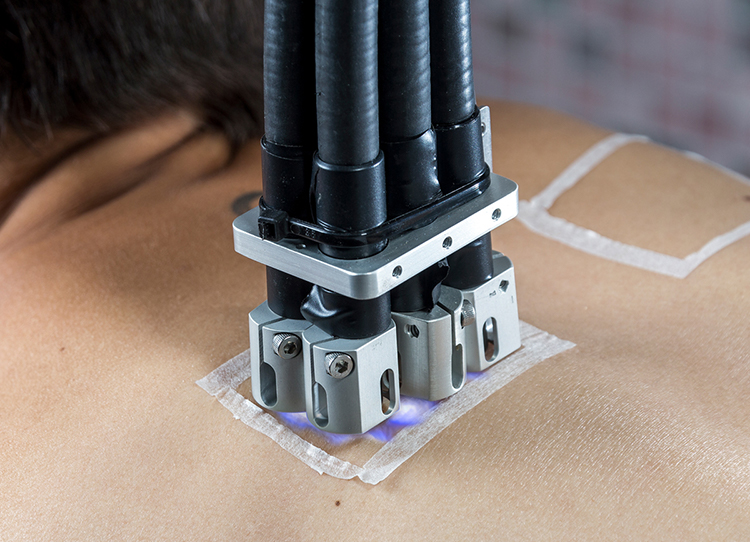PATCH TEST
Evaluation of the irritant potential of a cosmetic product through a patch test performed under occlusion or in a semi-open mode
PHOTO-PATCH TEST
Evaluation of the photo-sensitizing potential of a cosmetic product through a patch test performed under occlusion or in a semi-open mode.
HRIPT – HUMAN REPEAT INSULTED PATCH TEST
Evaluation of the irritant potential and low sensitizing capacity of a cosmetic product through a repeated insult patch test, with possible concurrent use of the product.
IN VIVO DETERMINATION OF THE SUN PROTECTION FACTOR (SPF)ACCORDING TO ISO 24444:2019/AMD 1:2022
The purpose of the test is the in vivo determination of the sun protection factor (SPF) of cosmetic products containing sunscreens. Sample preparation, test execution, and data analysis are performed according to ISO 24444:2019/Amd 1:2022.
IN VIVO DETERMINATION OF THE SUN PROTECTION FACTOR (SPF) ACCORDING TO ISO 24444:2019/AMD 1:2022 + IN VIVO DETERMINATION OF WATER RESISTANCE ACCORDING TO ISO 16217:2020 AND ISO 18861:2020
The purpose of the test is the in vivo determination of the sun protection factor (SPF) of cosmetic products containing sunscreens and the in vivo determination of its water resistance.
The test is performed according to ISO 24444:2019/Amd 1:2022 for the determination of SPF and ISO 16217:2020 and ISO 18861:2020 for the determination of water resistance.
The test is performed according to ISO 24444:2019/Amd 1:2022 for the determination of SPF and ISO 16217:2020 and ISO 18861:2020 for the determination of water resistance.
IN VIVO DETERMINATION OF THE SUN PROTECTION FACTOR (SPF) ACCORDING TO ISO 24444:2019/AMD 1:2022 + IN VIVO DETERMINATION OF VERY WATER RESISTANCE ACCORDING TO ISO 16217:2020 AND ISO 18861:2020
The purpose of the test is the in vivo determination of the sun protection factor (SPF) of cosmetic products containing sunscreens and the in vivo determination of its very water resistance.
The test is performed according to ISO 24444:2019/Amd 1:2022 for the determination of SPF and ISO 16217:2020 and ISO 18861:2020 for the determination of water resistance.
The test is performed according to ISO 24444:2019/Amd 1:2022 for the determination of SPF and ISO 16217:2020 and ISO 18861:2020 for the determination of water resistance.
IN VIVO DETERMINATION OF THE SUN PROTECTION FACTOR (SPF) ACCORDING TO ISO 24444:2019/AMD 1:2022 + IN VIVO DETERMINATION OF SWEAT RESISTANCE
The purpose of the test is the in vivo determination of the sun protection factor (SPF) of cosmetic products containing sunscreens and the in vivo determination of its sweat resistance.
To determine the SPF value, the test is performed according to ISO 24444:2019/Amd 1:2022, while the sweat resistance test follows an internal method
To determine the SPF value, the test is performed according to ISO 24444:2019/Amd 1:2022, while the sweat resistance test follows an internal method
CLINICAL TEST: EVALUATION OF THE NON COMEDOGENICITY OF A COSMETIC PRODUCT
The scope of this test is to evaluate if the use of the investigated cosmetic product does not induce the occurrence of new closed and open comedones and/or does not worsen the status of comedones.
EVALUATION OF THE TOLERABILITY OF A COSMETIC PRODUCT
The assessment of product tolerability can be performed on the skin, eyes, in pediatric, gynecological, and oral applications.


